Situated a two-hour drive west of Helsinki, the former tuberculosis sanatorium takes a humanistic approach to modern architecture
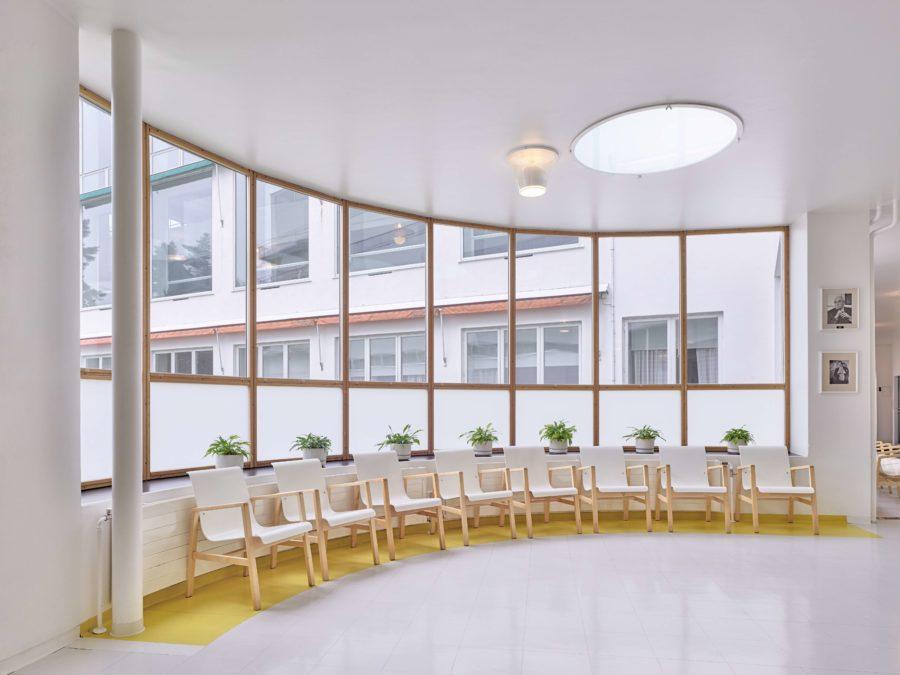 Photography by Fabrice Fouillet
Photography by Fabrice Fouillet
Words by Joe Lloyd
In 1928, an architectural competition was announced for the construction of a 184-bed tuberculosis sanatorium in Paimio, a tiny town on Finland’s southwestern coast. Among the architects who heeded the call was the 30-year-old Alvar Aalto.
Aalto was already one of Finland’s most successful architects. His early works resembled the Nordic Classicism then popular in Scandinavia, which combined the order and grandeur of neoclassical architecture with an almost minimalistic restraint. He had recently completed the Alajärvi Municipal Hospital, an unassuming low-rise structure that drew on Italian Renaissance monasteries and vernacular Finnish architecture.
His entry for Paimio seems beamed from a different world: seven floors of functional high modernism in glass and reinforced concrete. Its structure was modelled on Le Corbusier’s flexible system for concrete architecture, with load-bearing columns supporting floor slabs. It has a modernist sense of orderliness, with three wings and several outbuildings that each house a different function.
But it is not merely a machine for convalescing. The residential block features balconies that allowed patients to enjoy the air, and a rooftop sundeck for bathing. When it was completed in 1933, it won instant acclaim.
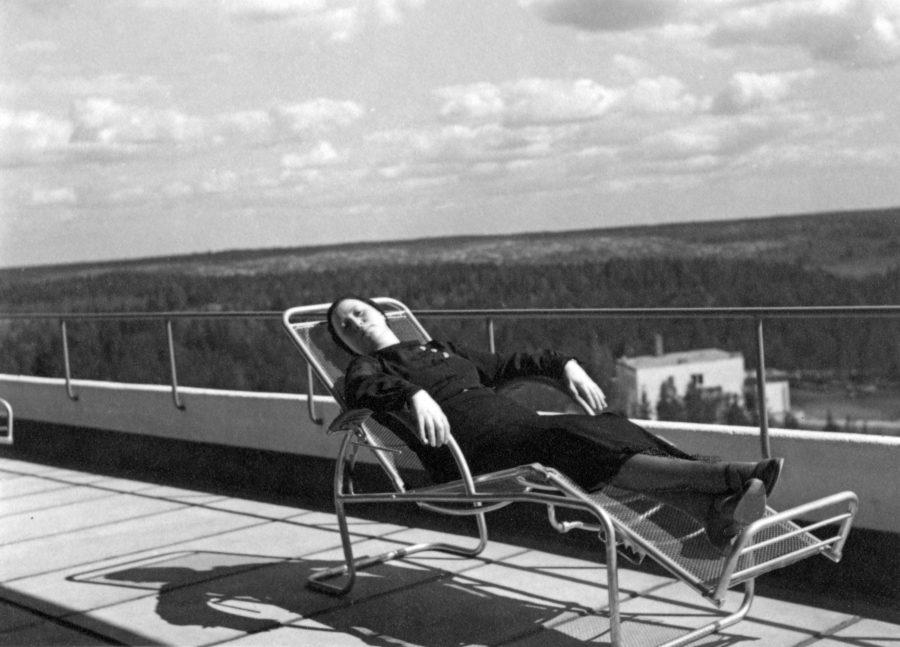 Photography courtesy of Paimio Sanatorium featuring Aino Aalto on the sun deck
Photography courtesy of Paimio Sanatorium featuring Aino Aalto on the sun deck
Such is the fame of Aalto’s building that it eclipses that of the town itself. Paimio is a tiny town on Finland’s southwestern coast, near the second city Turku and west of Helsinki. The sanatorium itself is several kilometres outside the town proper, hidden in thick woodland. Paimio’s setting is one of its boons. Its rows of colourful window awnings have something of the holiday resort.
The sun deck sits beneath a softly curved canopy, and its railings have an almost nautical aspect. From there, patients could gaze across the thick forest. On the ground, Aalto laid down walking trails, turning the woodland itself into an extension of the building.
Sanatoriums were a common feature of early 20th century life. The Architecture Review devoted an entire issue to them in 1933; Paimio had a starring role. Finland was particularly well-equipped due to its pioneering state-sponsored healthcare scheme, which saw hospitals, sanatoriums and clinics rapidly spring up.
At the time Paimio was built, there were almost 4,000 spaces for tuberculosis patients in the country. Private sanatoriums could be luxurious; the Berghotel in Thomas Mann’s The Magic Mountain (1924) resembles a grand hotel more than a hospital. But the public equivalent could be less salubrious, closer to workhouses and asylums.
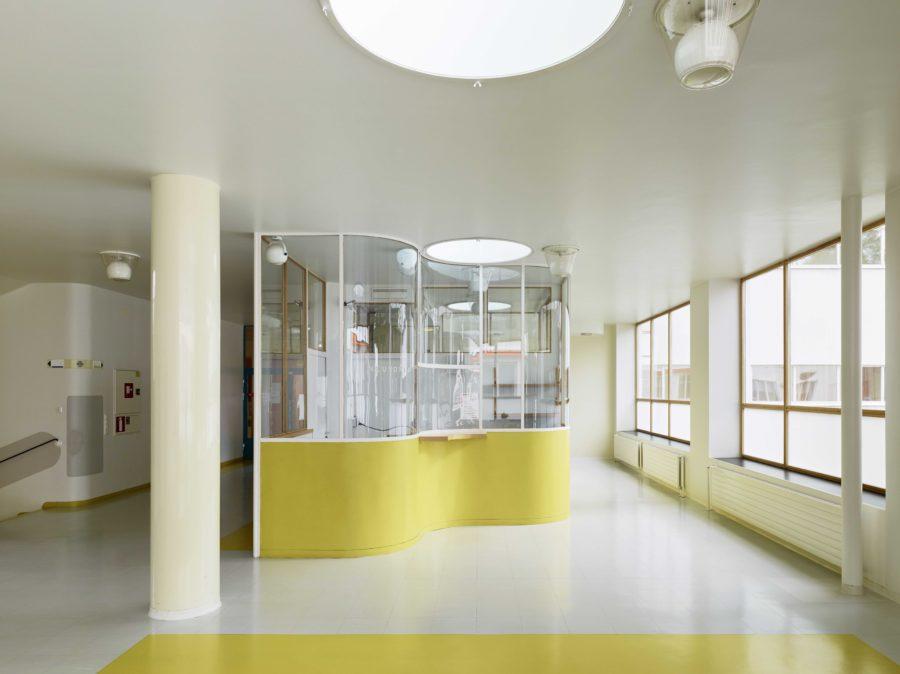 Photography by Tuomas Uusheimo
Photography by Tuomas Uusheimo
Designing a building for the sick is a tricky business. Historically, hospitals were places where the sick were confined to prevent their illness from spreading. Their curative function only came in the 19th century, after medicine advanced sufficiently that recovery from illness became a possibility.
The tuberculosis sanatorium to some extent harked back to the older type of hospital. Sanatoriums are places which we ideally want to stay away from. Once forced there, we want to leave them. Patients at a tuberculosis sanatorium faced years of isolation, with about a 50/50 chance of death.
A humane sanatorium should downplay the tragedy of its purpose while simultaneously being optimised for this function. Like hospitals, they are both a tool — ‘The main purpose of the building’, Aalto said of Paimio, ‘is to function as a medical instrument’ — and a place of calm and rest. Paimio is remarkable for its pioneering through design.
Aalto and his wife Aino provided all the interior design, furniture and fittings. They prescribed a palette of strong and soothing colours, vivid without being unduly cheerful. There are dark greens and blue walls, canary yellow floors and orange balcony railings. Wherever possible, the building’s fittings curve, taking the edge off its grid-like structure.
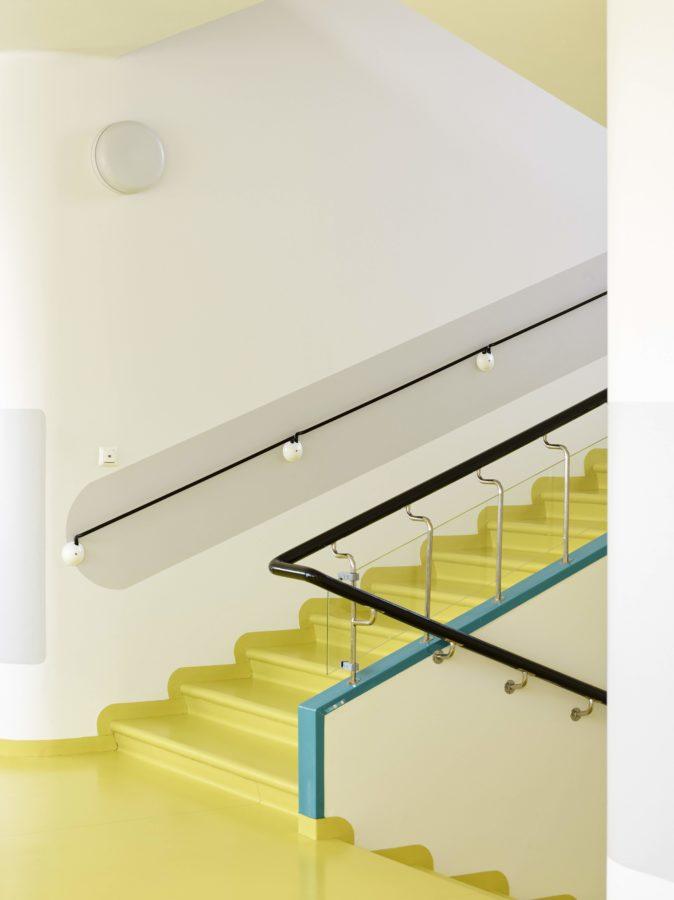 Photography by Tuomas Uusheimo
Photography by Tuomas Uusheimo
The Aaltos designed a number of ingenious inventions: quiet no-splash sinks; easy window-opening mechanisms; raised wardrobes that could be cleaned beneath; door handles designed not to catch on the staff’s lab coats. But the most famous piece of furniture created for the sanatorium is Armchair 41 (now known as the Paimio Armchair), arguably the best-known Finnish furniture piece of all.
It is a marvel of bentwood, its seat curving like an unfurled scroll, suspended as by magic between two looping arms. It was inspired by Marcel Breuer’s Club Chair (1927-28), but swapped the Hungarian’s futuristic metal for soft, organic wood, something that would become a hallmark of Nordic design. It has been continuously in production since 1935.
The age of the sanatorium came to an end with the discovery of the antibiotic streptomycin, which all but eradicated tuberculosis from the West. Paimio became a more active site of medical treatment. An operating theatre was added, with Aalto’s involvement, in 1955. In the 1960s, it was converted to a general hospital, then in 2014 a rehabilitation centre for children.
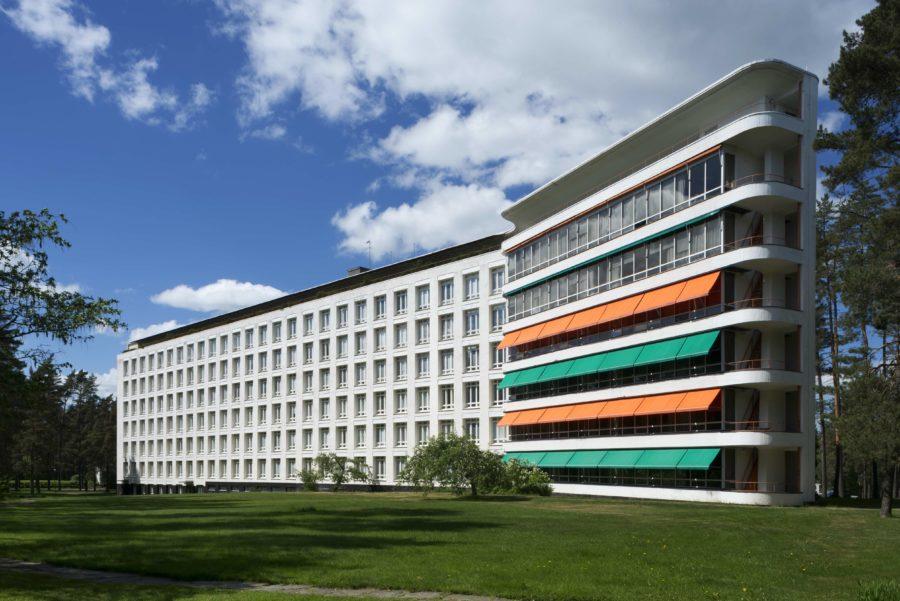 Photography courtesy of Paimio Sanatorium
Photography courtesy of Paimio Sanatorium
In 2018 it was put up for sale, until the Paimio Sanatorium Foundation was founded. It is now open for visitors. Some of the outbuildings that housed former staff have been converted into holiday lets, designed in collaboration with the likes of Artek and Hakola.
The Foundation intends to house ethical organisations, such as wellbeing and climate change charities, in the building: a move from healing the individual to healing the world. It is a testament to the Aaltos that the building has so long outlasted its original function with many of its fittings intact.
Paimio, alongside the concurrent Viipuri Library in Vyborg, shot Aalto to the front rank of modernist architecture. It served as an inspiration for healthcare buildings the world over. But perhaps the building’s greatest achievement was in proving that modernism could be humane.
Read more in ICON 210: The Finland Issue or get a curated collection of architecture and design news like this in your inbox by signing up to our ICON Weekly newsletter
















